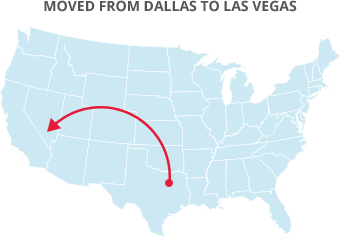

 There is something about a tall stack of boxes and rolls of packing tape that is refreshing—here is your chance to go through all your things and carefully box your treasures, so when you get to your new home and commence unpacking the boxes it will feel just like your birthday when you were a kid. Pretend for a few seconds that is how the entire master plan actually unwinds, and you're not scampering around the home like a crazy person throwing heirloom china in with the set of encyclopedias, be sure you've got the best packing supplies for your moving job.
There is something about a tall stack of boxes and rolls of packing tape that is refreshing—here is your chance to go through all your things and carefully box your treasures, so when you get to your new home and commence unpacking the boxes it will feel just like your birthday when you were a kid. Pretend for a few seconds that is how the entire master plan actually unwinds, and you're not scampering around the home like a crazy person throwing heirloom china in with the set of encyclopedias, be sure you've got the best packing supplies for your moving job.
Boxes and tape are a couple of the most critical components of packing, and all boxes and tape are NOT similar in quality. It's alright to toss random coffee mugs in an old shoe box and store it on a shelf in the pantry, but to pack, stack, and transport that box, it will fall down like a house of cards and you will end up with a lot of broken mugs.
If you are packing your things on your own, do some research into the materials before you get started. If you are hiring a moving company to execute the actual moving, they will most likely have the best heavy-duty boxes, tape, and wrapping stuff you'll require. If not, storage facilities, big box stores, and the internet are decent sources to get your supplies, but since you can't do tactile research online, do not depend on reviews to help you—everyone packs differently and "sturdy" and "solid" are highly subjective words.
Find boxes that are corrugated--a layer of wavy fiber between the inner and outer layers of heavy cardboard. The corrugation allows for structure and strength, so when you put them on the moving van they do not crumple. There are different amounts of toughness within the corrugated department, so you can get the box strength you require for a specific item--go with the strongest duty boxes for the most breakable and the heaviest items you will pack.
While you are buying boxes, be sure and buy some of the small ones--heavy belongings go in small boxes, bulky lightweight things go in the larger boxes. For instance, books weigh quite a bit and should be packed in a small box. Blankets and throw pillows are comparatively lightweight and can be placed in the larger ones.
Picking up cheap, low quality tape is where lots of DIY packers get discouraged. If it's cheap, it won't stick well. Worse, it will stick to itself when it is dispensed out of the gun and splinter in small little pieces and then you have to pick at it for quite a while and attempt to get it to unstick in a single piece. Splurge on a decent-quality gun or two with a padded handle—you'll be glad you did when you're seventy-five boxes in with a lot more to go. It is also a good idea to purchase your tape in bulk--it costs less and you can normally take back what you do not use.
 There are several options for padding around the inside of the boxes. Old towels and linens are amazing when you need something lining the box, like when you are packing shoes and do not want them crashing around.
There are several options for padding around the inside of the boxes. Old towels and linens are amazing when you need something lining the box, like when you are packing shoes and do not want them crashing around.
Newsprint is definitely the best alternative for almost everything--from wrapping mugs (thread a twisted end through the handle and stuff the other ends inside after it is wrapped) to books to small appliances.
Bubble wrap can get expensive, but get the good stuff anyway, since that is what you will use it for. The bubble size varies, but a decent guideline is for your bubble size to pair the item size—use the big bubbles for padding around the entire box. Feel the wrap prior to purchasing it, and make sure of how strong it is when you squeeze and pull it. If it's fragile or does not like the bubbles hold, look for another brand.
If you have not moved in a while, and you go looking for boxes, be ready to be surprised at the alternatives you have. When your parents moved, they might have bought their tape and boxes and had the entre neighborhood keeping newspapers for a long time. Today, there are bunches of specialty moving supplies you will discover on the shelves—several are definitely worth the extra expense, some are just reinventing the wheel—it's up to you to decide what's going to work best for you situation. Remembe, be positive you're buying good quality--you do not want your mattresses in flimsy plastic sheeting.
Now that you have the smaller items under control, make a plan for how you are going to move the big stuff out the door--the dressers, the lawn mower, the grill--but don't fear, help is on the way. For several of these items renting equipment is the best way to go.
Your furniture is more delicate than you think--surface dings and scrapes are overall very common when items come off the truck. You can negate this damage with some key protection; again, be sure you're getting acceptable quality materials that stand up to a lot of wear and tear.
The last things you will want to have are for the super heavy and bulky stuff. Unless you happen to have these items already, it would be best.
However you are moving your home, your local moving company will be able to help you with all of the speciality items you will need to move. Just keep in mind that you are packing your entire life in these boxes, so be sure that your moving materials are acceptable to handle the task.

